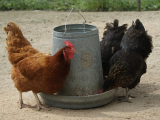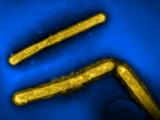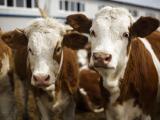The latest analysis of reassortant H5N6 avian flu viruses from South Korean wild birds and domestic ducks shows that the strain is a close relative of an H5N6 virus that first turned up in Greek poultry last season, but it has two mutations that might alter its susceptibility to neuraminidase inhibitors, according to an expert familiar the test results.
In other avian flu developments, the animal health officials in the United Kingdom (UK) issued a new risk assessment for avian flu in Europe, and French veterinary authorities reported another low-pathogenic H5N3 outbreak in poultry.
H5N6 mutations might lower susceptibility
Viruses from recent outbreaks in South Korea underwent further analysis at the Animal and Plant Quarantine Agency of the Republic of Korea and the International Reference Laboratory in the UK government's Animal and Plant Health Agency lab at Weybridge. And a reliable but anonymous source outlined the findings yesterday in a post to ProMED Mail, the online reporting system of the International Society for Infectious Diseases.
Earlier this week, the Netherlands became the fifth country to report the H5N6 reassortant, which is different than the one that has caused human infections in China and has been found in poultry outbreaks in a few Asian countries. In November, South Korea reported its first outbreak involving the reassortant, which was quickly followed by detections in Japan and Taiwan.
According to the source, phylogenetic analysis showed that the recent H5N6 virus from South Korea differs from the strain implicated in outbreaks last winter. Also, all genes except neuraminidase are from the European H5N8 lineage that triggered widespread outbreaks last season and is still causing sporadic outbreaks.
The neuraminidase gene, most similar to the H5N6 reassortant detected in Greece last winter, is related to low-pathogenic Eurasian influenza A virus circulating in wild birds. The expert said, however, there are differences between the neuraminidases in the Greek and South Korean isolates, and one of the viruses can't determine the risk for the whole lineage. "Indeed, the Korean isolate has 2 mutations, which might confer altered susceptibility to neuraminidase inhibitors."
The findings point to ongoing H5 lineage circulation in multiple geographic regions, likely spread by wild birds.
Though so far sequence analysis doesn't show that the virus poses a zoonotic threat, heightened vigilance should be maintained for potential spread from wild birds to poultry, the expert said. The source added that the findings also underscore the complex evolution of H5 clade 2.3.4.4 viruses that will likely have different phenotypic properties in a range of hosts, possibly including humans.
DEFRA weighs H5N6, H5N8 threats
In a new outbreak assessment update, the UK Department for Environment, Food, and Rural Affairs (DEFRA) said the recent H5N6 outbreak in the Netherlands probably reflects a new incursion into Europe, given that the only previous detection on the continent was the earlier poultry outbreak in Greece.
The agency added that the same farm in the Netherlands was struck by an H5N8 outbreak last year. So far, early analysis suggests it is a reassortant between H5N8 and low-pathogenic H5N6.
DEFRA also weighed in on the H5N8 threat, saying that since late October, outbreaks have continued, but at a lower rate than last season in just four countries: Russia, Italy, Germany, and Bulgaria.
Wild migratory waterfowl have arrived from Asia for overwintering in northern Europe and the UK, and compared with this time last year, the outlook is more favorable for central Europe, with relatively fewer cases in wild birds. However, DEFRA added that it's possible that wild birds have asymptomatic infections or are immune after exposure to the virus last season. Also, it's possible that local birds could be maintaining the H5N8 virus, which could spread by other routes.
With uncertainty about H5N8 prevalence in wild birds and the new development with the H5N6 ressortant, DEFRA is keeping the risk level at "medium" for now, with the risk staying at "low" for individual poultry farms.
Low-path H5N3 in France
In outbreak developments, veterinary officials in France reported another low-pathogenic H5N3 outbreak, the second involving the strain this month, according to a report to the World Organization for Animal Health (OIE).
The new outbreak began on Dec 2 at a turkey breeding farm in Maine-et-Loire department in west central France. Farm workers noticed an excessive death rate and a drop in egg production in one of the facility's four pens. The virus killed 30 of 9,200 turkeys, and the remaining ones are slated for culling.
See also:
Dec 12 ProMED Mail post
Dec 11 DEFRA report
Dec 11 OIE report on H5N3 in France



















